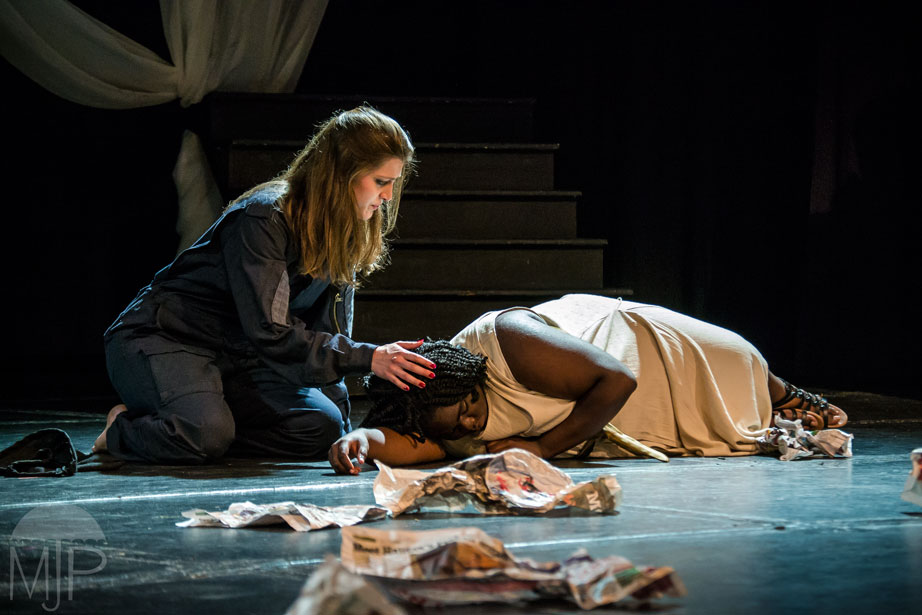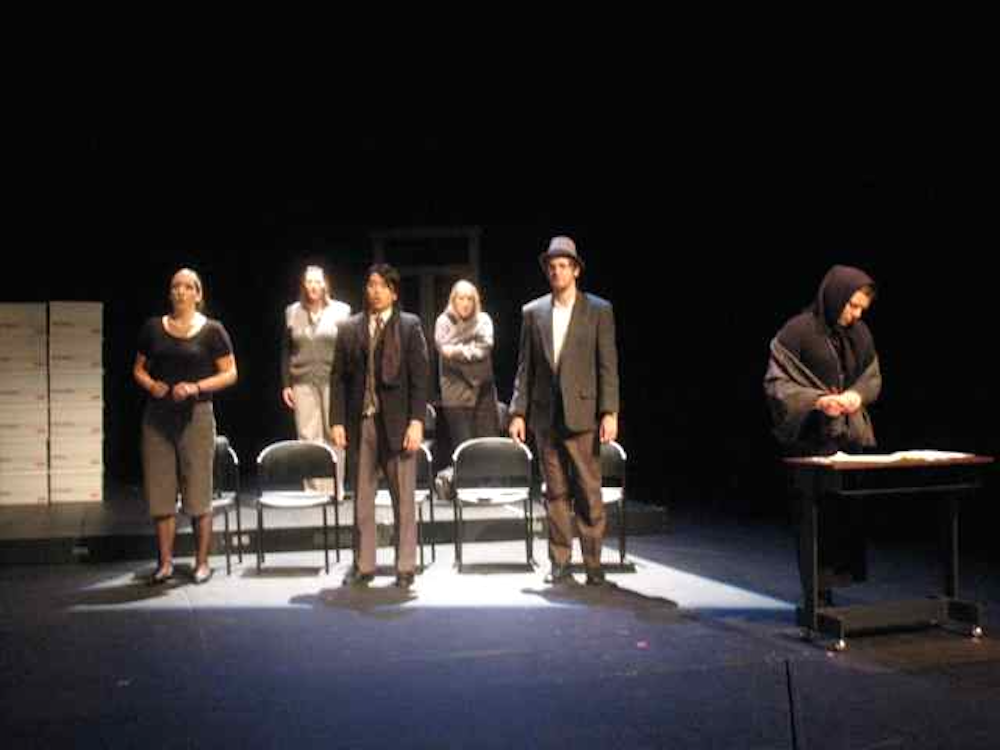Serse (1738)
music by G.F. Handel
libretto after Silvio Stampiglia
sung in Italian
conductor: Melissa Doiron
stage director: Nina Scott-Stoddart
pianist: Nick Rodgerson
bassoon: John Rowe
vocal coach: Maureen Batt
costumes: Ryann Farmer
Alexander Technique: Mary Fay Coady
Performances at Lilian Piercey Concert Hall, Maritime Conservatory of Performing Arts, 6199 Chebucto Road, Halifax:
Friday August 11, 7:30 pm
Saturday August 12, 2:00 pm
Performances at Paul O’Regan Hall, Halifax Central Library, 5440 Spring Garden Rd, Halifax:
Friday August 18, 7:30 pm
Saturday August 19, 7:30 pm
HSOF would like to thank our Serse production sponsor, Halifax Public Libraries!

Serse Artists
| SERSE by Handel | Friday August 11 7:30 pm (Conservatory) Friday August 18, 7:30 pm (Library) | Saturday August 12 2 pm (Conservatory) Saturday August 19 7:30 pm (Library) |
|---|---|---|
| Serse | Haley Boyd | Emma Yea |
| Arsamene | Hannah Overbey | Karina Lago Disdier |
| Armastre | MacKenzie Sechi | Heather Byford |
| Romilda | Siyuan Carter-Patkau | Clare Lowe |
| Atalanta | Chihiro Yasufuku | Julia Jordan |
| Ariodate | Nicholas Murphy | Nicholas Murphy |
| Elviro | MarKo Hubert | MarKo Hubert |
PROGRAM NOTES
by Martin Pearlman for Boston Baroque
Handel’s opera scores tell us a good deal about the way in which he worked. In them, he would note the date on which he began composing an opera and the dates on which he finished sketching each of the acts. Then, once all the acts were sketched, he would go back and fill in the orchestration and other details, adding the date when the opera was “completely finished” (“völlig geendiget”). Thus we know that he completed his opera Faramondo on Christmas Eve of 1737 and then rested for just one day over the holiday before beginning work on Serse on December 26. From that point, it took him about two weeks to sketch each of the three acts, and he had the entire opera completely finished by February 14, 1738.
As fast as this may seem for writing an opera, it was on the slow side for Handel. He appears to have taken extraordinary care in shaping this work. The autograph is full of corrections, reworkings and cuts, many of them aimed at compressing the drama and moving it forward. There being no author’s name on the libretto, Handel himself may well have adapted it for his own use, adjusting it as needed while composing the music.
The original version of the libretto had been written nearly a century earlier for Cavalli’s opera Xerse. Then in 1694, it was adapted by Silvio Stampiglia for a setting by Bononcini. Handel based his libretto on the one used by Bononcini, although he shortened it considerably. He omitted minor characters, removed a few complicated subplots, cut a number of arias, and reduced some of the other arias to brief ariosos — all of this in order to tighten the drama, even if it meant that a character’s motivation might be less fully explained. It is fascinating to see that Handel sometimes borrowed musical ideas from Bononcini’s settings of particular arias. While he was well known for borrowing from other composers (and from his own music), he did not ordinarily borrow from someone else’s setting of the very text that he was working on. It makes one wonder whether he had Bononcini’s opera in front of him, as he adapted both the libretto and occasional musical ideas to his own purposes.
The story of the opera takes place in the fifth century B. C. E. and is loosely based on incidents recounted by the Greek historian Herodotus. The Persian king Xerxes (the biblical Ahasuerus) is in the midst of his war against the Greeks, while at home, he becomes infatuated with the wife of his brother Arsamenes, thereby enraging his own wife Amestris with his infidelity. The full story, according to Herodotus, is much uglier and bloodier than the one that Handel tells, but the main characters are historical. The libretto also incorporates a few details from the military campaign against the Greeks: the bridge across the Hellespont, which the Persians constructed of boats tied together, was indeed initially destroyed by winds; and the opera opens with Xerxes admiring a majestic plane tree, which, it is said, he came across on his campaign and so admired that he decorated it with gold and wrote an ode to it.
Serse received its premiere on April 15, 1738 at the King’s Theatre in London. The title role was sung by the alto castrato Caffarelli, but the role of Arsamene, Serse’s brother, was written for a woman, Maria Marchesini. Initially, the opera was not a great success. It ran for only five performances and then was not heard again until the twentieth century. One account from the time tells us that the performances of both the cast and the orchestra were weak, but some of the problems lay elsewhere. Being one of Handel’s last operas, Serse was written at a time when the British love affair with Italian opera was waning, and Handel was beginning to turn toward writing oratorios in English. Perhaps it was this change of style that led him to write far fewer standard da capo arias and employ more flexible, fluid forms in Serse than was typical of Italian operas of the time. Some of his contemporaries found this confusing. One listener wrote that, although he admired the opera, the music ran so fluidly together, sometimes without recitatives separating the arias, that “tis difficult to understand till it comes by frequent hearing to be well known.”
Today Serse is one of Handel’s most popular operas and has come to be considered one of his finest. The dramatic fluidity that surprised his own audience now seems refreshing and effective, and the music is unquestionably of the highest level. Serse’s brief aria Ombra mai fu, which opens the opera has become one of the most famous moments in all of Handel. Popularly known as “Handel’s Largo,” it has been excerpted in recordings all the way back to Caruso and beyond (including John Philip Sousa’s band arrangement of 1902). But there is other equally fine music throughout the opera, and the delineation of the various characters — including the rare (for Handel) buffo character of Elviro — shows the composer at one of his creative peaks. It is a surge of creative energy that could not be suppressed by the failure of this great opera and that would continue some months later, as he began work on his oratorio Saul. –
SYNOPSIS
Act1
The action is set at the time of the expedition mounted by the Persian King Serse (Xerxes) against the Greeks (c470 bce). Serse, self- willed and self-indulgent, sings of love to his beloved plane tree. His brother Arsamene appears with his servant Elviro in search of his beloved Romilda, daughter of the army commander Ariodate. Hearing Romilda’s singing, Serse immediately falls in love with her and orders his brother to woo her on his behalf. Arsamene warns Romilda of the king’s intentions, thereby giving hope to Romilda’s sister Atalanta, in love with Arsamene. Romilda rebuffs Serse.
Enter Amastre, an Egyptian princess betrothed to Serse. Disguised as a soldier, she vows revenge when she discovers Serse has jilted her in favour of Romilda. Ariodate returns victorious from battle, and Serse promises him a royal husband for his daughter. Arsamene gives Elviro a dangerously vague letter for Romilda assuring her of his love. Atalanta tells Romilda that Arsamene has a new lover. Romilda dismisses her sister’s words as a lie. Atalanta is confident that she will win Arsamene with her feminine wiles.
ACT II
In the city square Amastre learns from Elviro, disguised as a flower seller, that Serse is to marry Romilda. Elviro reveals his identity to Atalanta, who lies and tells him that Romilda now loves Serse. Atalanta extracts Arsamenes’ letter from Elviro and says she will deliver it herself. She then shows Serse the letter, saying that it was addressed to her, and proves that Arsamene loves her. When Serse shows the letter to Romilda she insists she will always be true to Arsamene. Serse, predictably, is incensed.
Arsamene is in a state of suicidal despair. Serse reviews his army at the bridge across the Hellespont and announces that he will advance into Europe. Serse again attempts to woo Romilda but the disguised Amastre intervenes with a drawn sword. Amastre is arrested but released on Romilda’s orders. Romilda sings in praise of true love.
ACT III
Arsamene and Romilda quarrel over the letter, but are reconciled when Atalanta reveals
her deception. Serse, now more menacing, presses Romilda to marry him. She says that he must first secure her father’s consent. Arsamene overhears their conversation,
and accuses Romilda of betraying him. She replies that death, not marriage, awaits her. She tells Serse that Arsamene is her lover, and that they have kissed. Serse instantly orders his brother’s execution. Arsamene and Romilda sing a duet of mutual reproach.
In the final scene Ariodate, mistakenly believing he is carrying out Serse’s wishes, gives Romilda in marriage to Arsamene. Serse, unreflective as ever, orders Arsamene to kill Romilda. Like a human dea ex machina, Amastre bursts forward, seizes Serse’s weapon, and reveals her true identity. Humiliated, Serse repents. He and Amastre embrace, he vows to renew his love for her, and blesses the marriage of Romilda and Arsamene. All join in praise of love.




